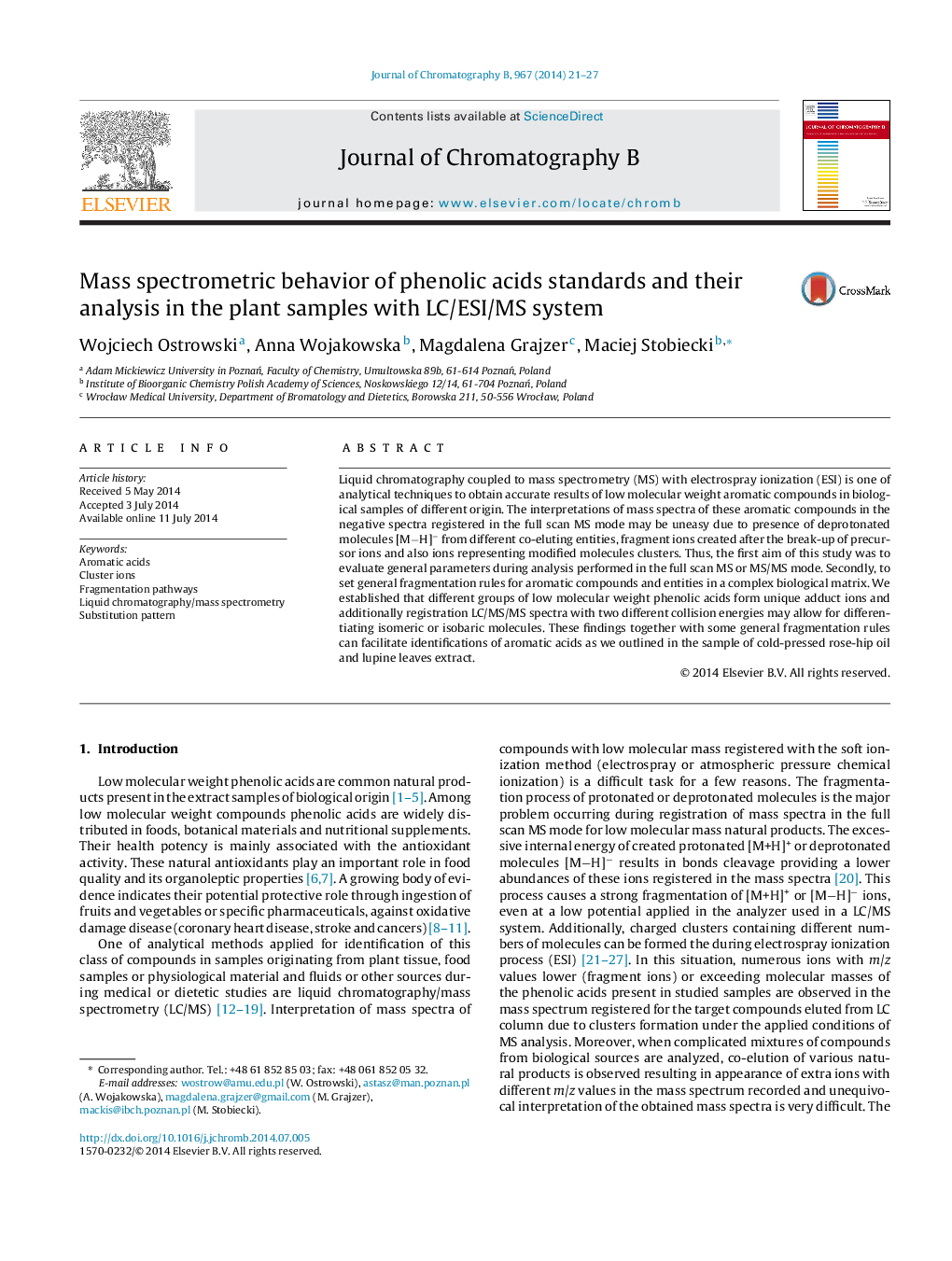| Article ID | Journal | Published Year | Pages | File Type |
|---|---|---|---|---|
| 1215728 | Journal of Chromatography B | 2014 | 7 Pages |
•Mass spectrometric analysis of low molecular weight aromatic compounds was performed.•Isomers can be recognized, when CID MS/MS techniques are applied.•Adduct ions formation is an information permitting ambiguous classification and in some cases identification of target compounds.
Liquid chromatography coupled to mass spectrometry (MS) with electrospray ionization (ESI) is one of analytical techniques to obtain accurate results of low molecular weight aromatic compounds in biological samples of different origin. The interpretations of mass spectra of these aromatic compounds in the negative spectra registered in the full scan MS mode may be uneasy due to presence of deprotonated molecules [M−H]− from different co-eluting entities, fragment ions created after the break-up of precursor ions and also ions representing modified molecules clusters. Thus, the first aim of this study was to evaluate general parameters during analysis performed in the full scan MS or MS/MS mode. Secondly, to set general fragmentation rules for aromatic compounds and entities in a complex biological matrix. We established that different groups of low molecular weight phenolic acids form unique adduct ions and additionally registration LC/MS/MS spectra with two different collision energies may allow for differentiating isomeric or isobaric molecules. These findings together with some general fragmentation rules can facilitate identifications of aromatic acids as we outlined in the sample of cold-pressed rose-hip oil and lupine leaves extract.
